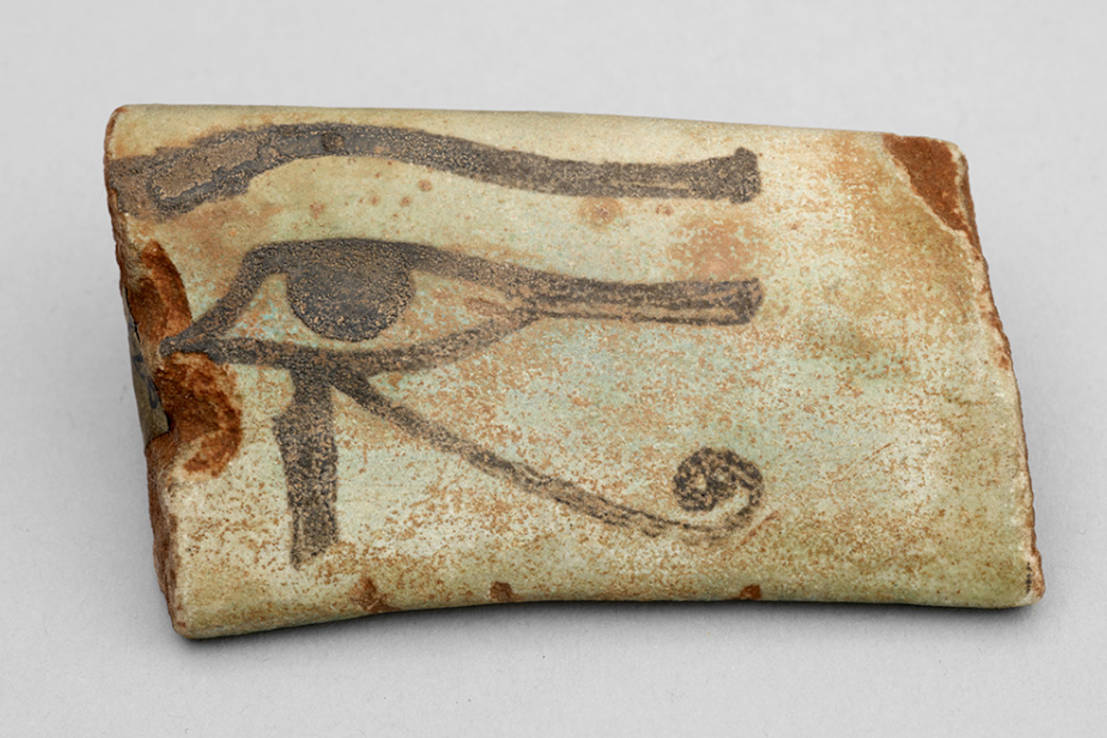
in മലയാളം / Malayalam translated by Divya
This object has been translated into 12 different languages by 15 different users
ഇതാണ് ‘ഹോറസ്റ്റിന്റെ കണ്ണ്’, ചിലപ്പോൾ ‘വെഡ്ജറ്റ് ഐ’ എന്നും അറിയപ്പെടുന്നു, പുരാതന ഈജിപ്തിൽ സംരക്ഷണത്തിന്റെ ഒരു ജനപ്രിയ ചിഹ്നമായി ഇത് ഉപയോഗിച്ചിരുന്നു. ഹോറസ് ദേവനെ ഒരു പരുന്തായി പ്രതിനിധീകരിക്കുന്നു. പുരാതന ഈജിപ്ഷ്യൻ പുരാണങ്ങളിൽ, ഹോറസ്റ്റിന്റെ പിതാവായ ഒസിരിസിനെ കൊന്ന തന്റെ എതിരാളിയായ സേത്തുമായുള്ള പോരാട്ടത്തിൽ ഹോറസ്റ്റിന്റെ കണ്ണ് എടുത്തുകളഞ്ഞു. കണ്ണ് പിന്നീട് തോത്ത് ദേവൻ പുനഃസ്ഥാപിക്കുകയും ‘വെഡ്ജാറ്റ്’ ആയി മാറുകയും ചെയ്തു, അതായത് പൂർണ്ണമായതോ ആരോഗ്യമുള്ളതോ.
പിന്നീട് ഇത് ഒരു ജനപ്രിയ സംരക്ഷണ ചിഹ്നമായി മാറി, പ്രത്യേകിച്ച് മരിച്ചവർക്ക്. പഴയ രാജ്യം മുതൽ റോമൻ കാലഘട്ടം വരെ ഏകദേശം 3000 വർഷങ്ങളായി ഇത് ജനപ്രിയമായിരുന്നു. കാനനൈറ്റ്, സിറിയൻ, നുബിയൻ പോലുള്ള അയൽ സംസ്കാരങ്ങളിലും ഇത് ഉപയോഗിച്ചിരുന്നു.
ഒരു ഭാഗ്യചിഹ്നമായോ സംരക്ഷണത്തിനോ നിങ്ങൾ എന്തെങ്കിലും സൂക്ഷിക്കുന്നുണ്ടോ?
This is an object from the Manchester Museum collection translated from English to the Indian language Malayalam.
Malayalam is a Dravidian language spoken very commonly in the Southern state of India called Kerala along with Indian territories Lakshadweep and Mahé, Puducherry.
Manchester has a vibrant Malayali community and a Manchester Malayalee association comprising of people from all age groups. This signifies the importance of having a translation in Malayalam of the museum objects thereby making the museum experience more welcoming, inclusive and wholesome.
Report License: CC Attribution - Creative Commons Learn moreDo you have something you’d like to say, in your own language or English, about the object or translation? We’d like to hear what you think.
Translations are community-sourced and for anyone to participate in, however you use your language. For more information, see Community Guidelines.
19 Dec, 2025
Do you have a spam issue on this blog; I also am a blogger, and I was curious about your situation; we have developed some nice methods and we are looking to exchange solutions with others, please shoot me an email if interested.
http://www.vorbelutrioperbir.com
23 Sep, 2023
Italians, especially in southern Italy, are well known for their attachment to superstition. Therefore, it is not surprising that good-luck charms are particularly popular. Arguably, the most popular amulet is the “cornicello” or “cornetto” (meaning “little horn”). The amulet is believed to protect against “malocchio” (“evil eye”), and it is commonly found in the Italian regions of Campania, Lazio, Puglia, and Basilicata.
The cornetto is in the shape of a horn, and it can be made from metal, but it is most commonly red in colour. This makes them look very similar to chilli pepper, but it is meant to represent an eland horn. The cornetto finds its origin in Greek and Roman mythology as it is linked to another common symbol: the cornucopia. The cornucopia, also known as the “horn of plenty” is a symbol of abundance and it is commonly illustrated as a large horn-shaped container overflowing with fruits and flowers. Similarly, the cornetto is also associated with abundance and fertility and remains one of the most common Italian symbols of protection. If you ever go to Naples, you can be certain to see at least one cornetto be worn as jewellery, hung from the rearview mirrors of a car, or kept in a house for decor and good luck.